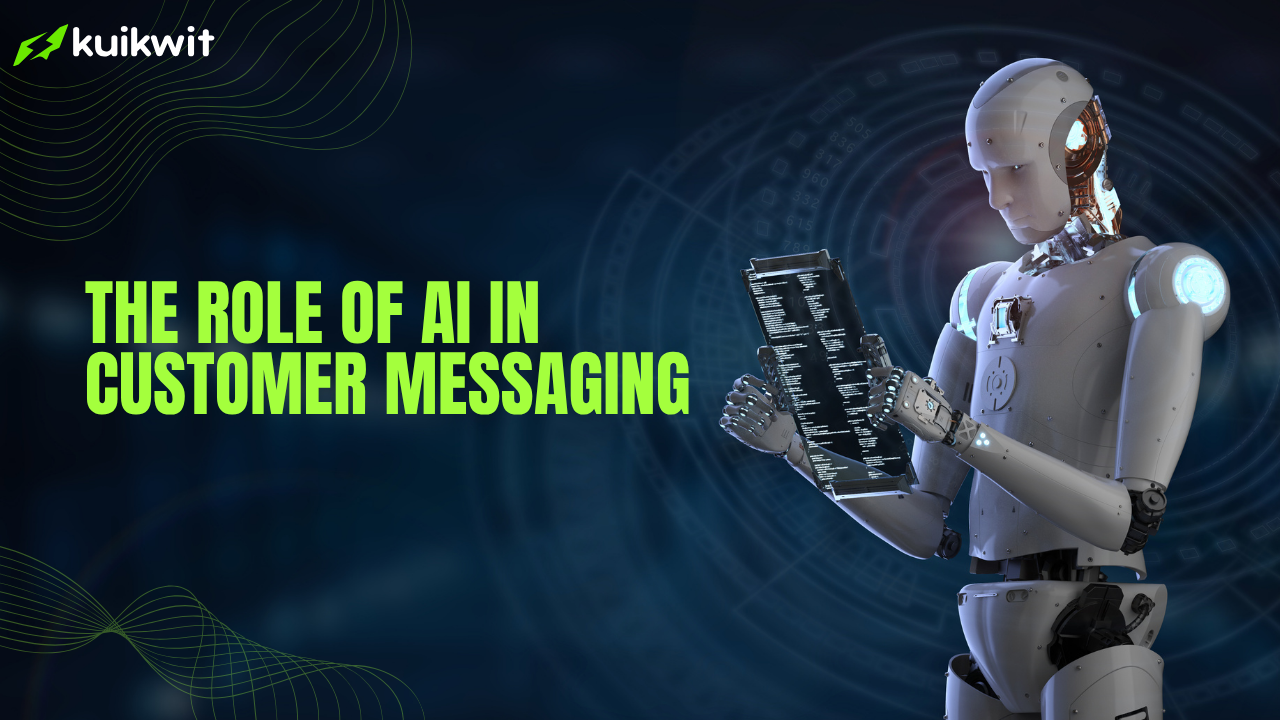The Role of AI in Customer Messaging | Smarter Customer Conversations
Discover the role of AI in customer messaging and how it improves speed, personalization, and customer experience. Learn how businesses use AI to boost support and sales.

Introduction: A Changing Customer Experience
Picture this: Emma is shopping online late at night. She has a question about product sizing, but the store’s support team is offline. Instead of waiting until morning, she opens the chat box and gets an instant response thanks to AI. Within seconds, Emma has the information she needs and completes her purchase.
This isn’t science fiction. It’s the reality of modern customer communication. AI in customer messaging is transforming how businesses interact with people, making conversations faster, smarter, and more personal.
But what exactly is the role of AI in customer messaging, and why does it matter for businesses of all sizes? Let’s break it down.
Why Customer Messaging Matters More Than Ever
Messaging is now the preferred way for customers to connect with businesses. According to Twilio, 89% of consumers want to use messaging to talk with brands. Customers expect instant replies, personalized experiences, and seamless conversations across multiple platforms.
The challenge? Meeting these expectations at scale. That’s where AI steps in.
The Role of AI in Customer Messaging
AI isn’t just a buzzword it’s a tool reshaping customer engagement. Here’s how AI is powering better messaging experiences:
1. Instant Responses, Anytime
AI chatbots can reply within seconds, even outside business hours. This means customers don’t have to wait, and businesses don’t lose potential sales.
Example: A customer asking, “Where’s my order?” gets an immediate tracking link without waiting for a human agent.
2. Personalized Conversations
AI analyzes customer data like purchase history or browsing behavior—to tailor responses. Instead of generic messages, customers receive relevant, contextual answers.
Example: “Welcome back, Alex! Since you bought running shoes last month, you might love these new fitness accessories.”
3. Smarter Routing to Human Agents
Not every issue can be solved by AI. That’s why advanced systems automatically route complex queries to the right human agent, along with context from previous interactions. This saves time and avoids customers having to repeat themselves.
4. Multichannel Consistency
From WhatsApp and Instagram to live chat and email, customers use many platforms. AI ensures consistent tone and responses across all channels, keeping communication smooth and professional.
5. Learning and Improving Over Time
AI systems learn from past conversations. The more they interact, the smarter they become. Over time, they reduce errors, improve accuracy, and deliver more natural, human-like interactions.
Benefits of Using AI in Customer Messaging
Here’s why businesses are adopting AI-driven messaging:
- Faster response times → No more long waits.
- Reduced costs → AI handles routine queries, freeing agents for complex cases.
- Higher customer satisfaction → Quick, accurate replies build trust.
- Scalability → Manage thousands of conversations at once.
- Sales growth → Personalized offers and timely reminders drive conversions.
According to Juniper Research, AI chatbots will save businesses over $8 billion per year by 2024, mainly through efficiency and faster resolutions.
Real-World Examples
- E-commerce brands use AI to recommend products and recover abandoned carts.
- Banks deploy AI bots to answer balance queries or help with transactions securely.
- Healthcare providers use AI messaging for appointment reminders and FAQs.
- Small businesses benefit from AI by offering 24/7 support without hiring large teams.
The Human + AI Partnership
While AI is powerful, it works best when combined with human support. Customers value empathy and complex problem-solving that AI can’t fully deliver yet.
The winning formula is:
- AI handles routine tasks (order tracking, FAQs, reminders).
- Humans handle complex, emotional, or high-value interactions.
This balance ensures speed, personalization, and genuine care.
The Future of AI in Customer Messaging
As technology evolves, AI in messaging will only grow more advanced. Here are a few trends to watch:
1. Voice + Messaging AI Integration → Blending voice assistants with chatbots.
2. Predictive Messaging → Reaching out to customers before they ask.
3. Hyper-Personalization → Using real-time data for tailored recommendations.
4. Emotion Recognition → AI detecting customer sentiment for better responses.
Businesses that adopt these trends early will gain a significant competitive edge.
Why Businesses Need the Right Tools
AI alone isn’t enough it needs a strong platform to integrate with. That’s where Kuikwit (your all-in-one messaging hub) helps. Kuikwit brings AI-powered automation and human collaboration into one dashboard, so remote and in-house teams can:
- Manage all customer messages in one place.
- Automate common replies with AI.
- Personalize conversations using customer data.
- Track performance with analytics.
With tools like Kuikwit, businesses don’t just reply they build lasting relationships.
Conclusion
The role of AI in customer messaging is clear: it helps businesses respond faster, personalize communication, and scale effortlessly. Customers expect instant, seamless interactions, and AI makes that possible without sacrificing quality.
The future belongs to businesses that combine the efficiency of AI with the empathy of humans and platforms like Kuikwit make that partnership simple.
So, the question is: Are you ready to use AI in customer messaging to stay ahead of customer expectations?




